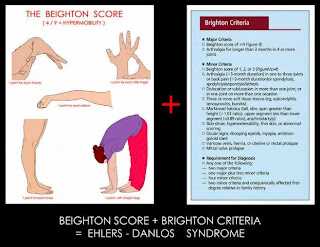Surprise Surprise!! Health facts that may surprise you
The human body is amazing and there is a lot that we know
about it but truthfully there is more that we don’t know and a lot of what we
do is more down to anecdotal evidence rather than hard evidence.
1:
2:
3:
5:
Here are 5 things that may surprise you:
1:
It is more important to be nice than to be experienced as a
healthcare professional!
Yes this one is true, you would think that the more
experienced the clinician and the more qualified that they are, means the more
likely you are to get better, but the research indicates this simply isn’t
true!
Physicians who have been in practice for more years may
possess less factual knowledge and are less likely to adhere to appropriate
standards of care in turn causing poorer patient outcomes (Choudhry et al
2005).
Kaptchuk et al (2008) actually found that patients did
better if the practitioner was caring, warm, attentive and confident even when
they offered placebo treatment. This is also supported by Hall et al (2010),
they found that if the therapist & patient relationship is positive then
the treatment outcome is positive.
Now I’m quite experienced and obviously getting more so as
time passes but don’t let that put you off as unlike some I keep up to date as
my blog illustrates, plus I’m nice too! Lol!
2:
Stretching doesn’t reduce injury risk!
How many of you stretch? Why do you do it? I bet it’s
because someone once told you that it reduced your chances of getting injured.
However, stretching was found to make no difference at all to injury risk
(Lauersen et al 2013). Nor was stretching
effective in reducing the number of running injuries (Van Mechelen et al 1993).
Now I’m not saying don’t stretch but you need more information first as to
whether it is right or wrong for you.
3:
Pain doesn’t mean injury!
Pain is a complex experience involving not only the
transmission of noxious stimuli but also cognitive & emotional processing
by the brain. The relationship between pain and tissue damage is not always
what we expect or understand. Basically pain is not always a warning of harm or
damage.
Just thinking that pain may occur can cause pain: The
anticipation of pain has the same neural responses that occur in clinical pain
in fibromyalgia & osteoarthritis (Brown et al 2014). Another example is
that injury can be present without pain. For example 51% of asymptomatic people
aged 80 and above had rotator cuff tears on ultrasound scans (Tempelhof et al
1999).
If you had a headache you would shrug it off and it would go
away on its own. You wouldn’t automatically think “I have a problem in my head”
but you do just this with pain in your back or your knee.
4:
Osteoarthritis isn’t only present in older people!
Now don’t get me wrong, Osteoarthritis is very common. It
affects 80% of the population beyond the age of 55 years old according to Kruger
(2000). Firstly this doesn’t mean that 80% of over 55 year olds have symptoms
and secondly this means younger people can have it too and it may or may not be
symptomatic.
It was found that there was degeneration in at least one
lumbar level in 35% of twenty and thirty-nine year olds according to MRI scans
of people with no symptoms at all (Boden et al 1990).
5:
Surgery may be only as effective as a placebo!
It has been found that placebo surgery is just as effective
as real surgery (Wartolowska et al 2014). More specifically, Arthroscopic
debridement for osteoarthritis of the knee doesn't improve pain or function
compared to placebo. (Laupattarakasem et al 2009).








Fibromyalgia is a disorder that causes muscle pain and fatigue. People with fibromyalgia have "tender points" on the body. Tender points are specific places on the neck, shoulders, back, hips, arms, and legs. These points hurt when pressure is put on them. Best fibromyalgia treatment
ReplyDelete